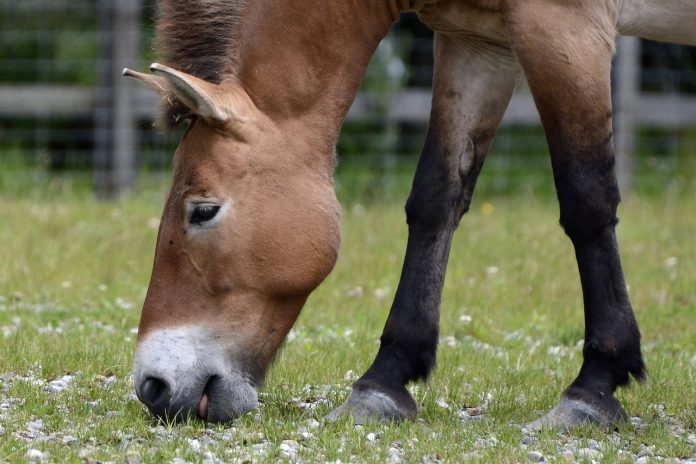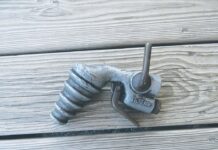Grazing animals are remarkable forage harvesting machines. Livestock select, bite off and chew plants differently.
Each livestock species has a tool or set of tools that help it gather food, grind and swallow. Forage livestock producers should consider how different livestock graze when establishing their farm’s rotational grazing system.
The main livestock involved in grazing forages are cows, sheep, goats and horses. Herbivores such as cattle, beef and dairy, sheep, goats and horses may get all of their feed from forages.
The only differences in how much and what is consumed, result from the different digestive systems and the animal’s ability to handle plant food containing celluloses and lignins.
Different behaviors
It is important to look at how different livestock chew their food and interact with a pasture to really understand how to utilize the growth and regrowth of forage grasses.
Livestock consumption issues include digestibility and palatability of grasses, their chewing habits, as well as the effects that trampling can have on forage plants.
First, cows have a long and dexterous tongue that they can wrap around forage plants and pull into it’s mouth where it is placed between its lower jaw and a dental pad on the upper, cows only have teeth on their lower jaw.
By swinging their heads, the cow then pulls or tears the plants and chews the food slightly, then mixes it with saliva before swallowing. Cattle normally graze for 6 to 11 hours a day usually just after dawn and just before dusk, with shorter times during the day or at night.
After the grazing period, the ruminant animal rests and ruminates, regurgitating the forage it has eaten, chewing, mixing it with more salvia and swallowing it again. Rumination time in ruminant livestock ranges 5 to 9 hours daily.
Because of the design of the cow’s lips, teeth and jaw a cow cannot get closer than about 2 inches from the soil.
Grazing around manure
Cows prefer not to eat around their own manure piles but will graze around different livestock manures. Cows are heavier livestock animals that can cause more damage to a pasture than lighter livestock such as sheep or goats.
Sheep use their lips and teeth as their harvesting tools. Their cleft lips move away from their teeth on the lower jaw and bring food in, while the upper jaw has a dental pad just like a cow.
This mouth structure allows sheep to bite plants closer to the ground and be more selective about what is eaten. Goats have teeth on their lower jaw and a strong dental pad on the upper.
The goat’s upper lips are incredibly mobile and with a strong tongue goats can selectively grab and are able to avoid thorns, etc. Goats prefer to browse on young woody trees, leaves and twiggs.
Goat behavior
Because goats browse, they make great companion animals to graze with cows or horses since they will eat the invasive plants such as multiflora rose, autumn olive and other brambles to help cleanup pastures.
Sheep and goats have smaller mouth parts, than cattle and horses, with which they use to nibble forage plants using a biting action. This biting action of sheep and goats allow them to be more selective and graze closer to the ground than the tearing action of cattle.
Both sheep and goats are also ruminant animals like cattle and digest their food in the same way. Sheep and goats are lighter animals and cause less damage to pastures than cattle and horses because they don’t trample and compact the soil the way heavier animals do.
Horses have both upper and lower sets of incisor teeth used for biting while the backset of molars are used for grinding food. Horses have a strong, sensitive upper lip that gathers the food and brings it to the incisors.
Horses are highly selective grazers and closely graze and bite off plants very close to the ground. Horses are more selective than cattle and tend to spot graze in pastures and paddocks.
Horse pastures
Because horses are heavier animals and have selective eating patterns, horse pastures tend to get overgrazed, trampled and eventually become unproductive. We have all been coping with the unpredictable weather this winter.
Unfortunately, the ground has never really frozen solid and farmers have been dealing with a lot of mud. Keeping this in mind we need to be aware that trampling by heavier livestock damages pastures of all soil types, effects their soil moisture levels and plant species.
Due to the differences in how livestock species graze, now is the time to start planning or improving your rotational grazing system on your farm. Plan on fixing the damages done this winter by your livestock due to the weather.
Consider seeding some hardier forage plant species on your pastures. Do some soil testing later this spring and lime or fertilize your pastures as needed.
Lastly, plan for the mud season by taking into account how the livestock species that you raise graze your forages.
Make sure that your rotational grazing system spends the mud season on your firmest, highest, best drained ground so that the livestock don’t damage the pastures during the unpredictable winter weather and spring thaw.













